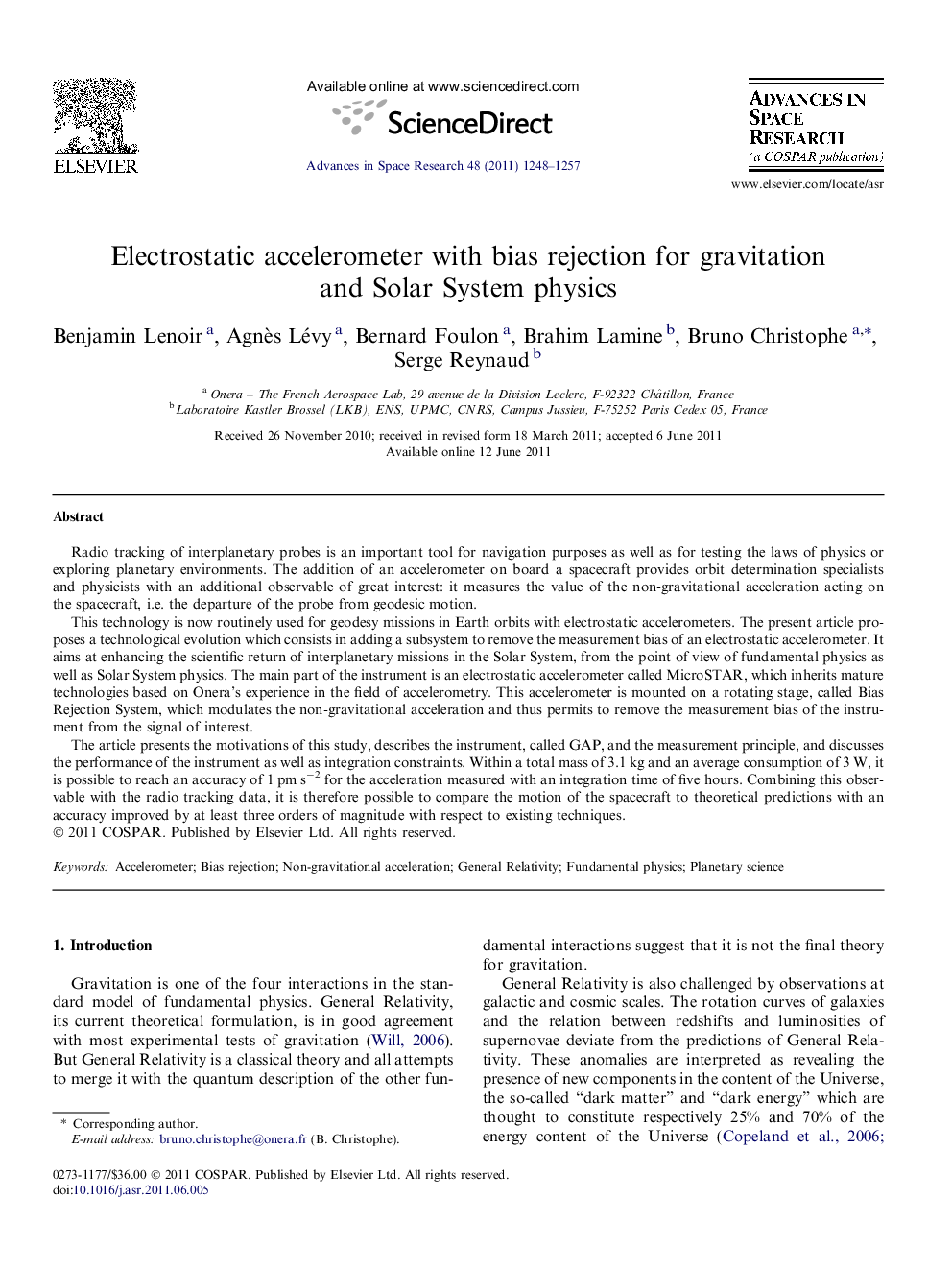| کد مقاله | کد نشریه | سال انتشار | مقاله انگلیسی | نسخه تمام متن |
|---|---|---|---|---|
| 1765033 | 1020081 | 2011 | 10 صفحه PDF | دانلود رایگان |

Radio tracking of interplanetary probes is an important tool for navigation purposes as well as for testing the laws of physics or exploring planetary environments. The addition of an accelerometer on board a spacecraft provides orbit determination specialists and physicists with an additional observable of great interest: it measures the value of the non-gravitational acceleration acting on the spacecraft, i.e. the departure of the probe from geodesic motion.This technology is now routinely used for geodesy missions in Earth orbits with electrostatic accelerometers. The present article proposes a technological evolution which consists in adding a subsystem to remove the measurement bias of an electrostatic accelerometer. It aims at enhancing the scientific return of interplanetary missions in the Solar System, from the point of view of fundamental physics as well as Solar System physics. The main part of the instrument is an electrostatic accelerometer called MicroSTAR, which inherits mature technologies based on Onera’s experience in the field of accelerometry. This accelerometer is mounted on a rotating stage, called Bias Rejection System, which modulates the non-gravitational acceleration and thus permits to remove the measurement bias of the instrument from the signal of interest.The article presents the motivations of this study, describes the instrument, called GAP, and the measurement principle, and discusses the performance of the instrument as well as integration constraints. Within a total mass of 3.1 kg and an average consumption of 3 W, it is possible to reach an accuracy of 1 pm s−2 for the acceleration measured with an integration time of five hours. Combining this observable with the radio tracking data, it is therefore possible to compare the motion of the spacecraft to theoretical predictions with an accuracy improved by at least three orders of magnitude with respect to existing techniques.
Journal: Advances in Space Research - Volume 48, Issue 7, 1 October 2011, Pages 1248–1257